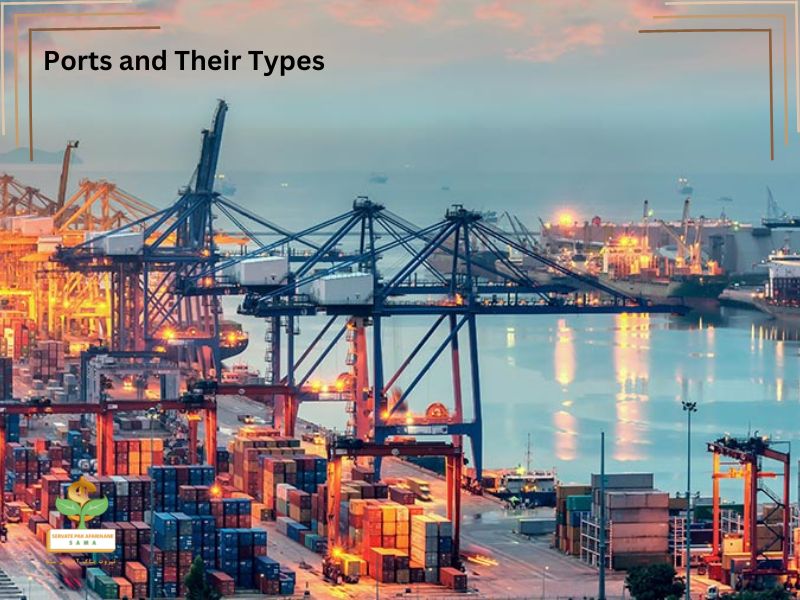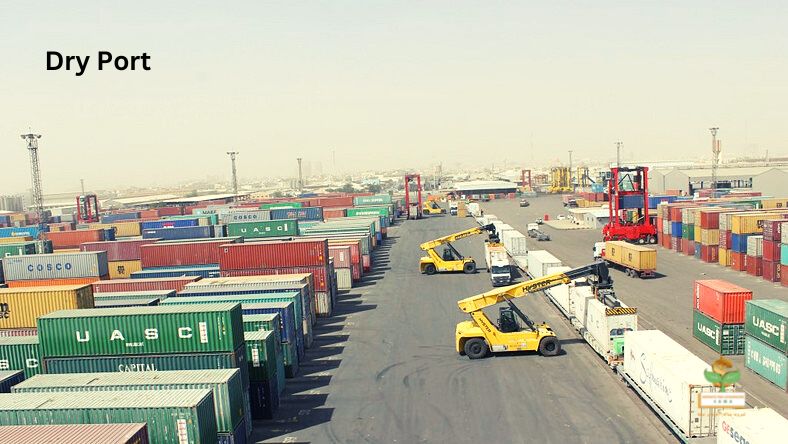
Ports and Their Types
If you work in international logistics, you know how important it is to understand the basic concepts. Sometimes, a lack of knowledge of these concepts will put you in huge trouble. Therefore, the contents mentioned in this article will definitely be helpful for you. In this article, we will discuss ports and their types, and also their different categories. Also, in this article, you will follow the following topics:
- Port definition
- Types of ports by definition
- Classification of ports by size
- Port rules
- Problems and obstacles of ports
- Port areas
Port Definition
A port is a geographical space where ships can dock and cargo can be moved. Ports and their types are known as places of entry and export of cargo, and in many cases, there are packing facilities and even the production process of goods in them. In addition, services such as fuel supply, water supply, and ship repair are also provided in the ports. Ports, like other transportation infrastructure facilities, require a lot of investment to create loading docks, wharves, breakwaters, channel digging and equipment installation, etc. For this reason, the cost of using the port usually includes a major part of transporting goods. For example, shipping costs vary from 7% of the CIF price, delivered at origin, for industrial goods to 15% for bulky goods. The cost of transporting goods such as timber is up to 30% of the price. Between 40 and 50 percent of the shipping cost figure is related to port costs.
Types of Ports by Definition
Sea Ports
Seaport modification refers to those ports that can accept ocean-going ships.
Inland Ports
Other ports, whether river or lake, are usually called internal ports.
Dry Ports
Large ports with equipment such as huge docks, breakwaters, cranes, and forklifts for unloading and loading ships, tugboats for moving ships in the port area, dry docks for repairing ships, facilities for Packaging and processing, and customs services are equipped. The term dry port refers to a large area that is used to store goods in bulk or containers and is usually connected to the main port by several roads and rails.
Warm Water Ports
A warm water port is a port whose waters do not freeze in winter and therefore can be used all year round. Such ports have great geopolitical and economic importance. The two ports of St. Petersburg in Russia and Valdez in Alaska are significant examples.
Classification of Ports by Size
Classification of ports in terms of size is a difficult task because various factors can be considered in this classification. The weight of goods, the volume of cargo, the amount of revenue, the number of ships, or the number of unloaded and loaded containers can be criteria for the activity of a port. But most international organizations classify ports according to the volume of the number of containers (TEU). TEU stands for Twenty Foot Equivalent Unit or containers with a length of 20 feet (20 x 8 x 8 feet). A 20-foot container is equal to one TEU, and a 40-foot container is two TEUs. The world’s major container ports are located in Southeast Asia, Northwest Europe, and the West Coast of the United States, and this reflects the pattern of global trade between production and consumption regions.
The countries of East Asia are in first place in the performance of port activities in the world with the development of port infrastructure facilities and the reduction of administrative and bureaucratic regulations such as tariffs and customs regulations.
Port Rules
Ports are generally owned by the public sector and managed by governments. Although certain activities may be non-governmental and managed by the private sector. In most government ports, especially in developing countries, due to the existence of old and traditional systems, incomplete information networks, and inappropriate pricing of various port activities (such as loading, unloading, and storage), ship owners have little incentive to They do not show the use of these ports. Surplus and unorganized manpower are obstacles to using modern unloading and loading equipment and other facilities, and often these forces, by working in two or three shifts, are practically against increasing the efficiency of the port and using advanced equipment with high efficiency and the ability to move very heavy goods.
Problems and Obstacles of Ports
Despite the above problems and obstacles and the common factor of poor management, due to the exclusive nature of ports, most of them are profitable in developing countries. However, this profitability is caused by the imposition of unreasonable costs on the owners of goods and ultimately the consumer, and not the economic efficiency of ports and their types in any type of division.
The critical point is that due to the rapid growth of world trade and the long time required to establish ports with modern technology, new equipment, and suitable warehouses with high unloading and loading capacity and storage of containers and bulky goods, and due to the huge volume Investing in port facilities, from now on, think about how to finance such a huge but necessary and certain investment. Otherwise, restrictions on modern port facilities and equipment will be a major obstacle to the country’s economic development. Iran is one of the countries that every year incurs a significant amount of cost of delay in unloading and loading of ships or damage to goods as a result of lack of warehouse and other facilities.
In any decision that is made about the creation of ports and their types in the future, with any kind of equipment and facilities, the issue of providing expert manpower and how to manage and exploit goods is one of the important issues that are less important than the technical and engineering aspects and facilities. And the equipment of the ports will not be. This issue is currently a problem in the ports of most developing countries.
Port Areas
Today, the port and its functional scope are not limited to one city and its port, and sometimes it covers a wide area that includes several cities. Perhaps what we call “Functional Space” in modern geography has been displayed in its best form in the major ports of the world. In addition to hardware equipment, port transport has a continuous need for human resources and related services, and this has led to the expansion of the geographical area of ports. You can see the table of the world’s largest port areas on the IATA (International Air Transport Association) website.
Therefore, as we said, knowing the basic concepts and tips for entering the field of international logistics and further down the road will be your guide, whether it is the basic concepts regarding customs and the history of shipping, or ports and their types. In this article, you also saw what categories exist for international ports. What are the rules, and what are the obstacles and problems?


